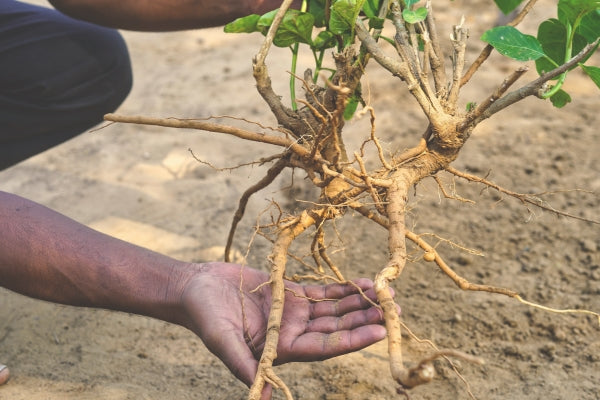

Ashwagandha (Withania somnifera) is a botanical root traditionally used in Ayurvedic practices for centuries. Known as a so-called “adaptogen” in traditional systems, Ashwagandha is commonly used as part of a balanced diet and lifestyle by individuals seeking support for general well-being.
While it has a long history of traditional use, it's important to note that no health claims for Ashwagandha are currently authorized by the EFSA or FDA, and this article is intended for educational purposes only, not as medical advice.
Botanical name: Withania somnifera
Used part: Mainly the root
Traditional origin: India, Middle East, and parts of Africa
Category: Traditionally described as an "adaptogen" (not a recognized medical category under EU/US regulations)
Ashwagandha is used in powder, capsule, and extract forms and is often included in modern wellness routines.
Ashwagandha has been traditionally used for:
Supporting resilience in demanding situations
Including in calming or nourishing herbal blends
General lifestyle balance and traditional vitality rituals
It continues to be a subject of scientific study related to its plant compounds, including withanolides, alkaloids, and saponins. These compounds are of research interest for their biological activity, though outcomes are not yet conclusive enough to form official health claims.
Capsules/Tablets: Convenient for measured intake
Powder: Traditionally used in warm milk or teas
Liquid extracts: Quick to use and easily added to drinks
Standard range: 300–600 mg daily
Traditional preparations: 1–2 tsp powder, mixed with milk or warm water
Dosage may vary based on the extract’s concentration (especially % withanolides)
Morning: Often taken as part of an energizing start to the day
Evening: In some cases, included in bedtime routines with calming herbs
Ashwagandha is commonly used by:
Individuals looking to include traditional botanicals in their routine
Adults managing busy, active, or mentally demanding lifestyles
People interested in plant-based supplements that support daily balance
Please remember: Ashwagandha is a dietary supplement, not a medicine. Its use should not replace professional medical treatment or advice.
Ashwagandha is generally well tolerated. However, always follow these precautions:
Start with a low dose to assess tolerance
Consult your healthcare provider if you are pregnant, breastfeeding, on medication, or have a medical condition
May cause mild digestive discomfort or drowsiness in some individuals
Avoid combining with sedatives or thyroid medications without medical supervision
1. Ashwagandha Latte
1 tsp Ashwagandha powder
1 cup warm (plant-based) milk
Cinnamon and honey to taste
→ Stir and enjoy as part of your evening routine
2. Energy Smoothie
1 tsp Ashwagandha powder
1 banana
1 cup almond milk
1 tbsp peanut butter
→ Blend and drink in the morning
3. Herbal Tea Blend
1 tsp Ashwagandha powder
1 slice fresh ginger
2 cups water
→ Simmer for 10 minutes, strain, and sip warm
Ashwagandha is a widely recognized root in traditional wellness systems. It can be a useful part of a balanced lifestyle when used responsibly and sourced from reputable brands.
However, do not interpret traditional use or current scientific interest as guaranteed benefit. Always choose lab-tested, high-quality products and consult a healthcare provider when introducing any new supplement into your routine.
Share:
How to use Shilajit?
Adaptogens: Everything you need to know